September 2016
We had two days in Nairobi and wanted a fairly relaxed schedule. This is what we did:
The Sheldrick Elephants
The David Sheldrick Wildlife Trust had us captivated from the first moment. The 11 o’clock feeding was surprisingly endearing, not commercial or money-grabbing, but educational and fascinating. It was wonderful to see the babies and their caretakers interacting. The love that goes into raising these orphans is amazing to behold.
This is a great initiative and needs loads of support to keep on going. I would recommend reading Dame Daphne Sheldrick’s memoirs (An African Love Story) for a deeper history on how this work came to be and the struggle to protect the Kenyan elephants.
The highlight of our trip was to go back (by appointment) and meet our little adoptee, Ambo (a ten-month old elephant rescued from Amboseli), put him to bed and meet his caretakers. Ambo is just one of many orphans at the Trust and we were happy to know that we have contributed something to his 24 litres of daily milk for the next three years, as well as the countless other costs of running an establishment of this nature.



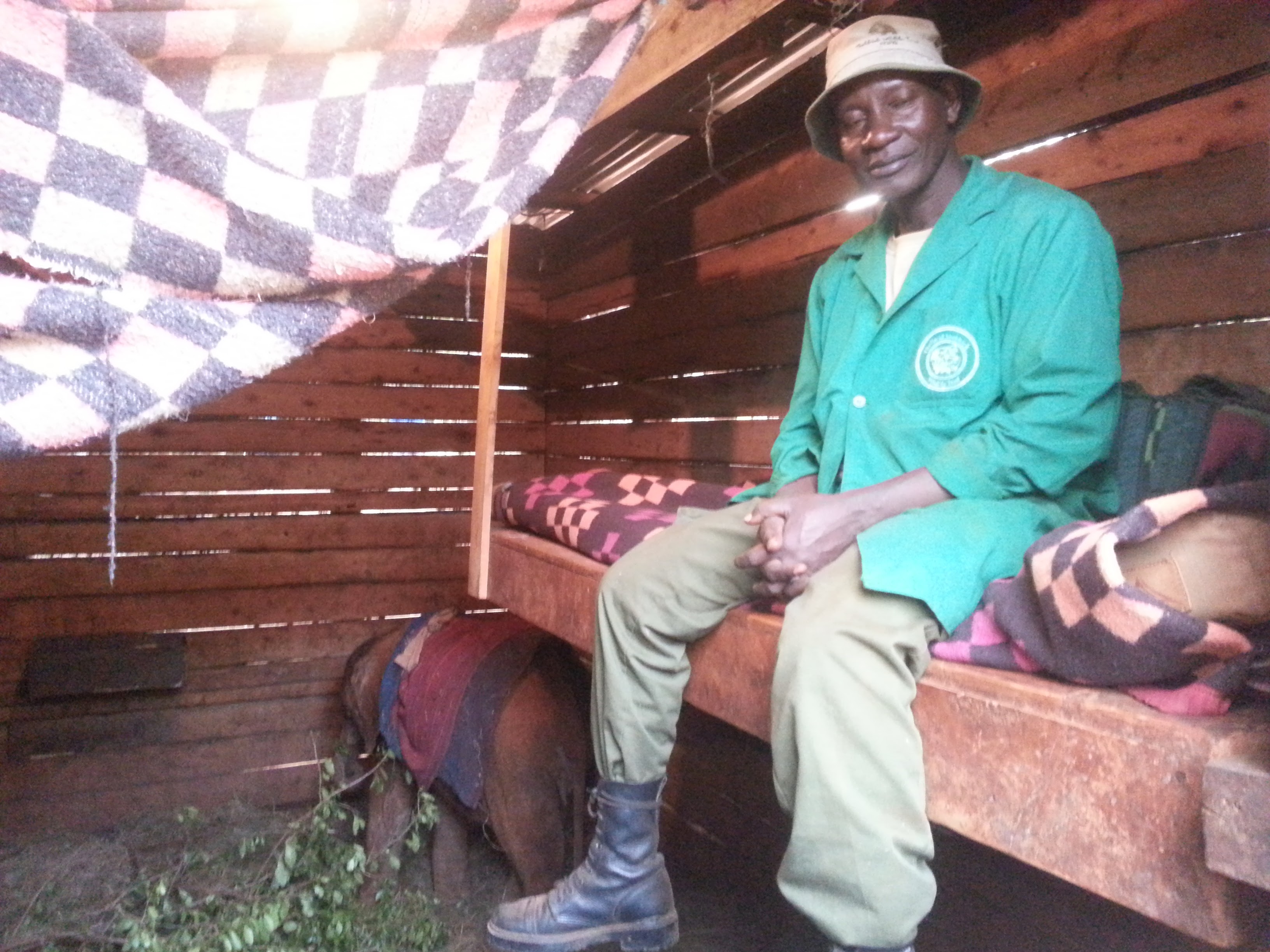
Thank you to the David Sheldrick Wildlife Trust team for all you do for these gentle giants, for Kenya, for Africa and for our children’s future with elephants and rhinos.
Giraffe Kisses

Having watched the Giraffe Tea movie as a child (with the little girl who feeds baby giraffes), I had always wanted to meet these majestic creatures up close and see the famous Giraffe Manor Hotel. Taking a few hours, we headed over to the Giraffe Centre in Karen, Nairobi – The African Fund for Endangered Wildlife.
Cost: As at September 2016, it cost 1000 KSH per non-resident for feeding, viewing and trails for the day.
There were nine giraffe altogether, including two small babies that were too cute for words, and a pregnant mama who was grumpy (and HUNGRY) stealing all the other giraffe’s vantage point for pellets. There are also warthogs and birds to see from the platform if the giraffe allow you a view around their enormous heads. Like a horse, it has a long nose, almost the length of your entire upper body, so the Afrikaans word ‘kameelperd’ (camel horse) seemed strangely appropriate up close.

 Kissing the giraffe seemed unthinkable, but we were assured by giggling giraffe centre educators of the ‘antiseptic properties’ of their saliva and the kisses were indeed great fun to photograph (because only one half of Travelinds was brave enough to do it after watching a few people get plastered). A 45cm tongue is rather adept at twirling the pellet right out between your thumb and forefinger and the head butts signal a demand for more!
Kissing the giraffe seemed unthinkable, but we were assured by giggling giraffe centre educators of the ‘antiseptic properties’ of their saliva and the kisses were indeed great fun to photograph (because only one half of Travelinds was brave enough to do it after watching a few people get plastered). A 45cm tongue is rather adept at twirling the pellet right out between your thumb and forefinger and the head butts signal a demand for more!
 It was a hugely entertaining, and most of all educational visit, where we learnt about the subspecies of giraffe in Africa and how to identify them. Before this, we were not even aware that we had seen different types of giraffe (Masaai with splotches, Rothschild with white legs and the Southern Giraffe which we have in South Africa).
It was a hugely entertaining, and most of all educational visit, where we learnt about the subspecies of giraffe in Africa and how to identify them. Before this, we were not even aware that we had seen different types of giraffe (Masaai with splotches, Rothschild with white legs and the Southern Giraffe which we have in South Africa).
Nairobi National Park
This was a fun day out, twelve hours of driving around, picnicking, watching animals and enjoying nature. We arrived at sunrise, paid the exorbitant non-resident fees, and within the first minute of our drive through the gate saw a huge male lion walking in the road, roaring his head off and looking right into our car window. Wow!
We also saw more than a hundred ostriches over the day, all the antelope, black and white rhino, a couple of hundred Maribou storks, 10 secretary birds, a family of crowned cranes, Malachite Kingfisher and a bounty of other small creatures and birds.
Lowlights: Trash covered Kingfisher Picnic Site after the public holiday long weekend party and a brazen Sykes monkey stole our banana (out of the car!) at the one picnic area while we were stretching our legs (this might have been a highlight though).
These are the Kenya Wildlife Services park fees.



At the end of the day, we visited the David Sheldrick Wildlife Trust to meet our adopted elephant and put him to bed. We had to drive out of the Banda Gate (get a special letter to exit) and then go down to the elephant orphanage through the secure area.
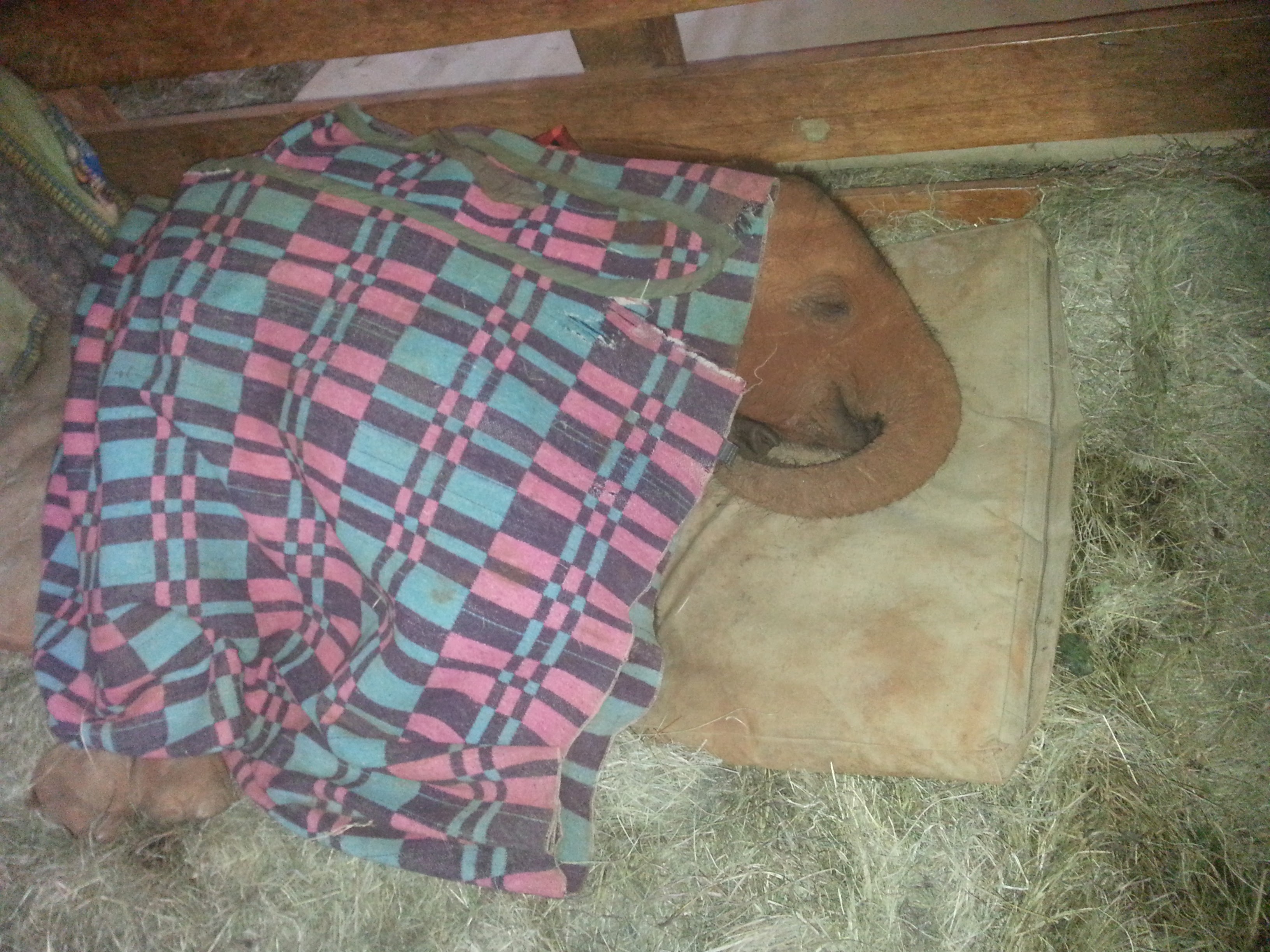


A wonderful end to a magical Kenyan trip!





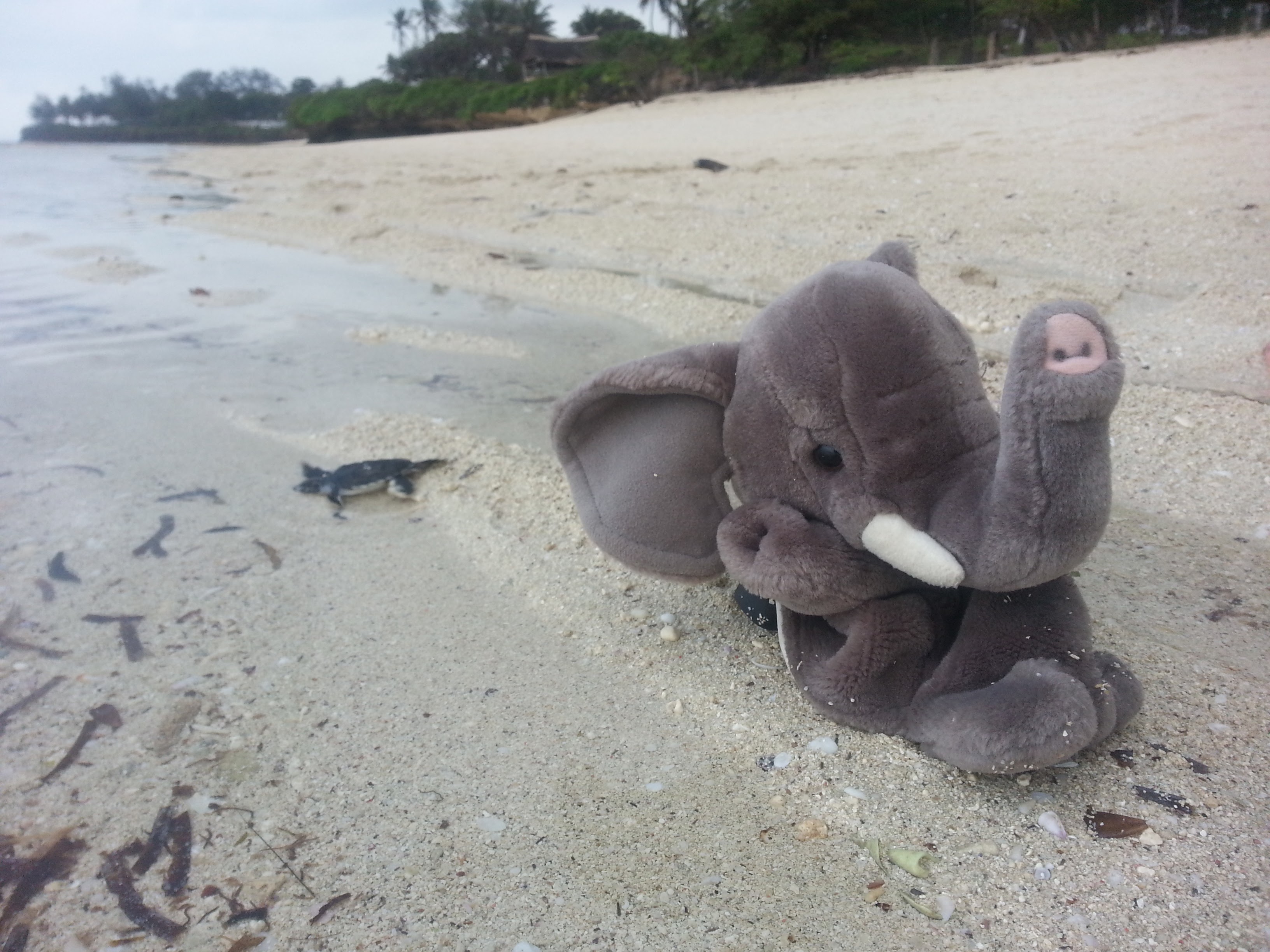



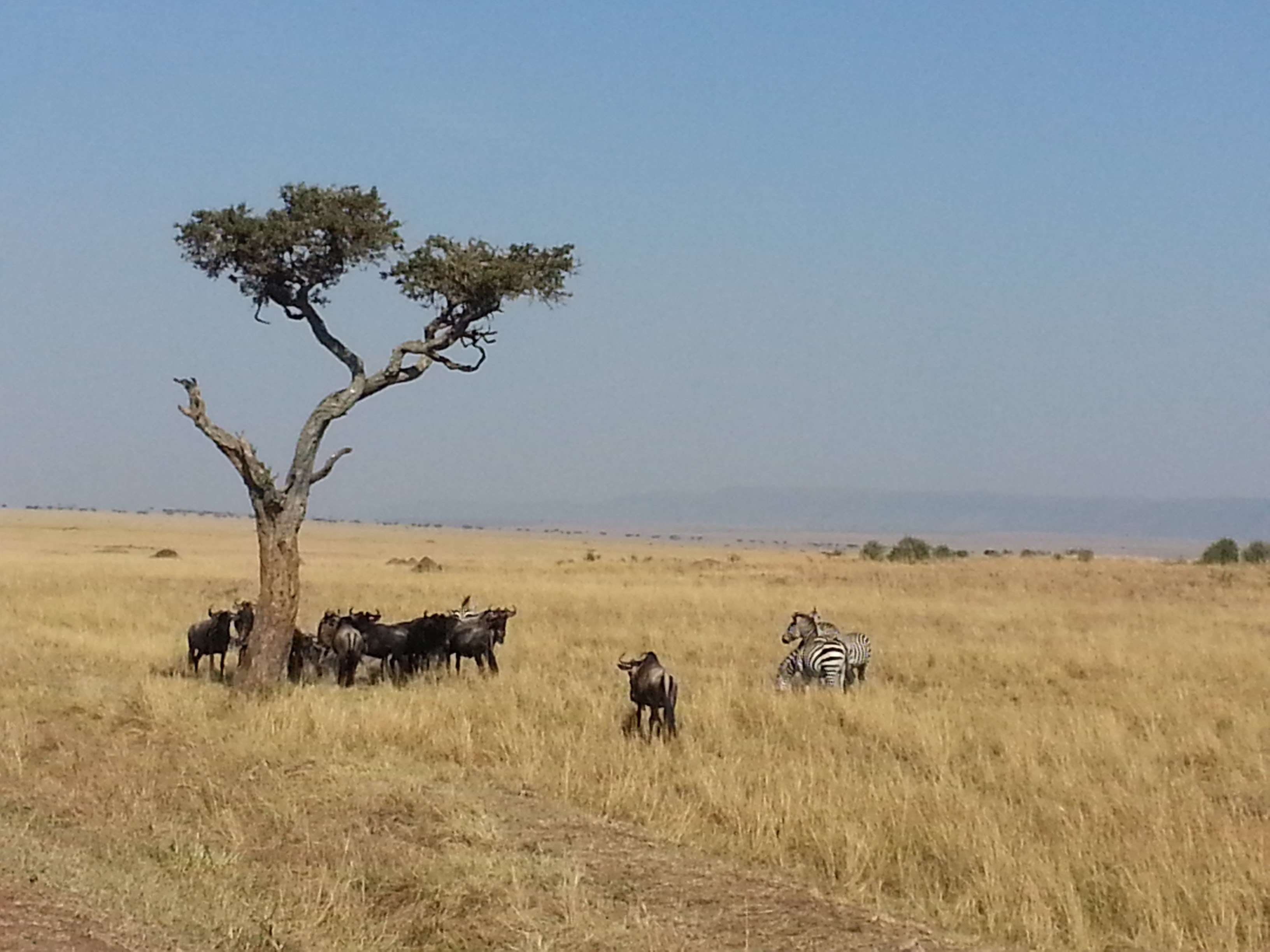
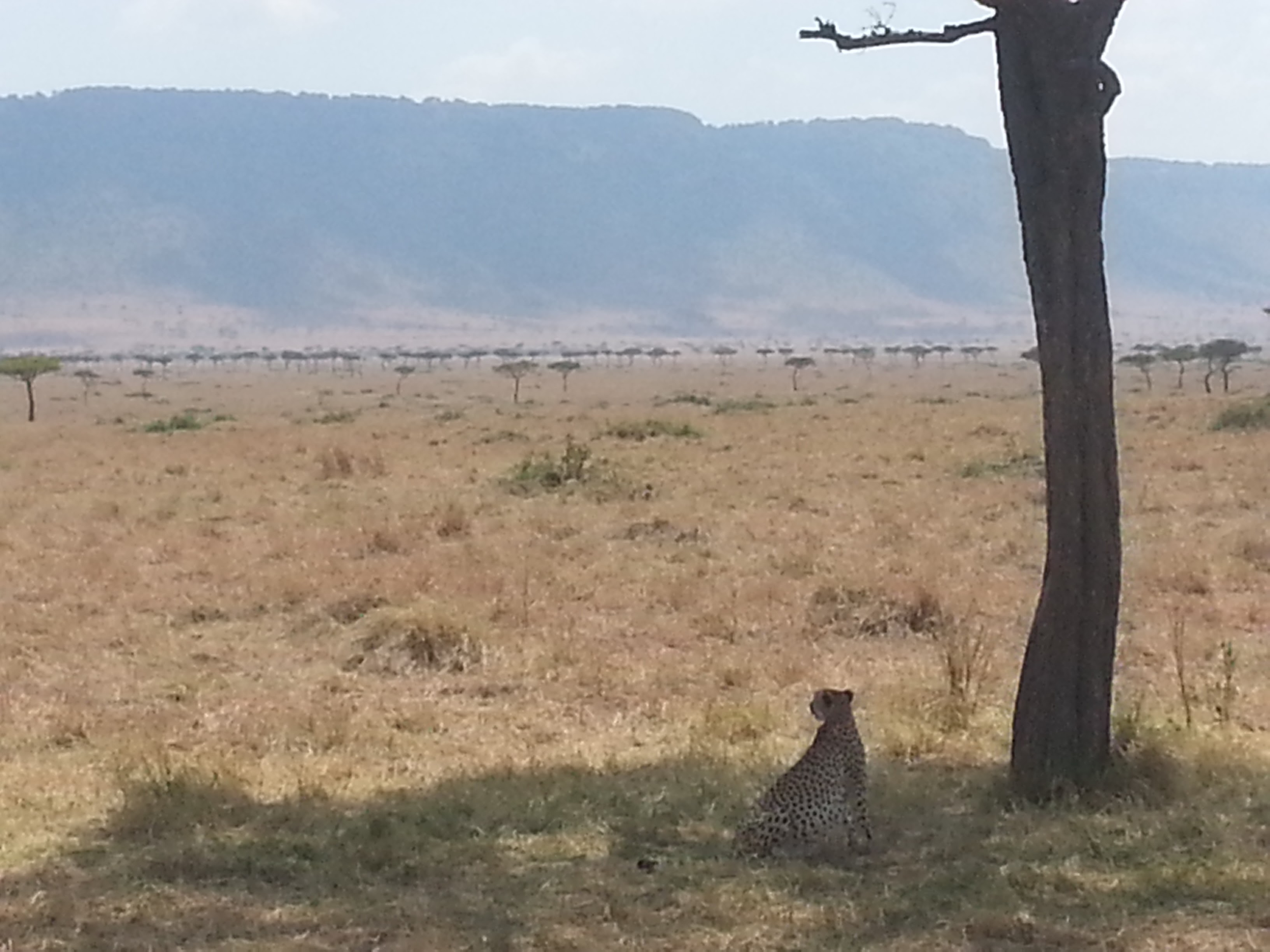
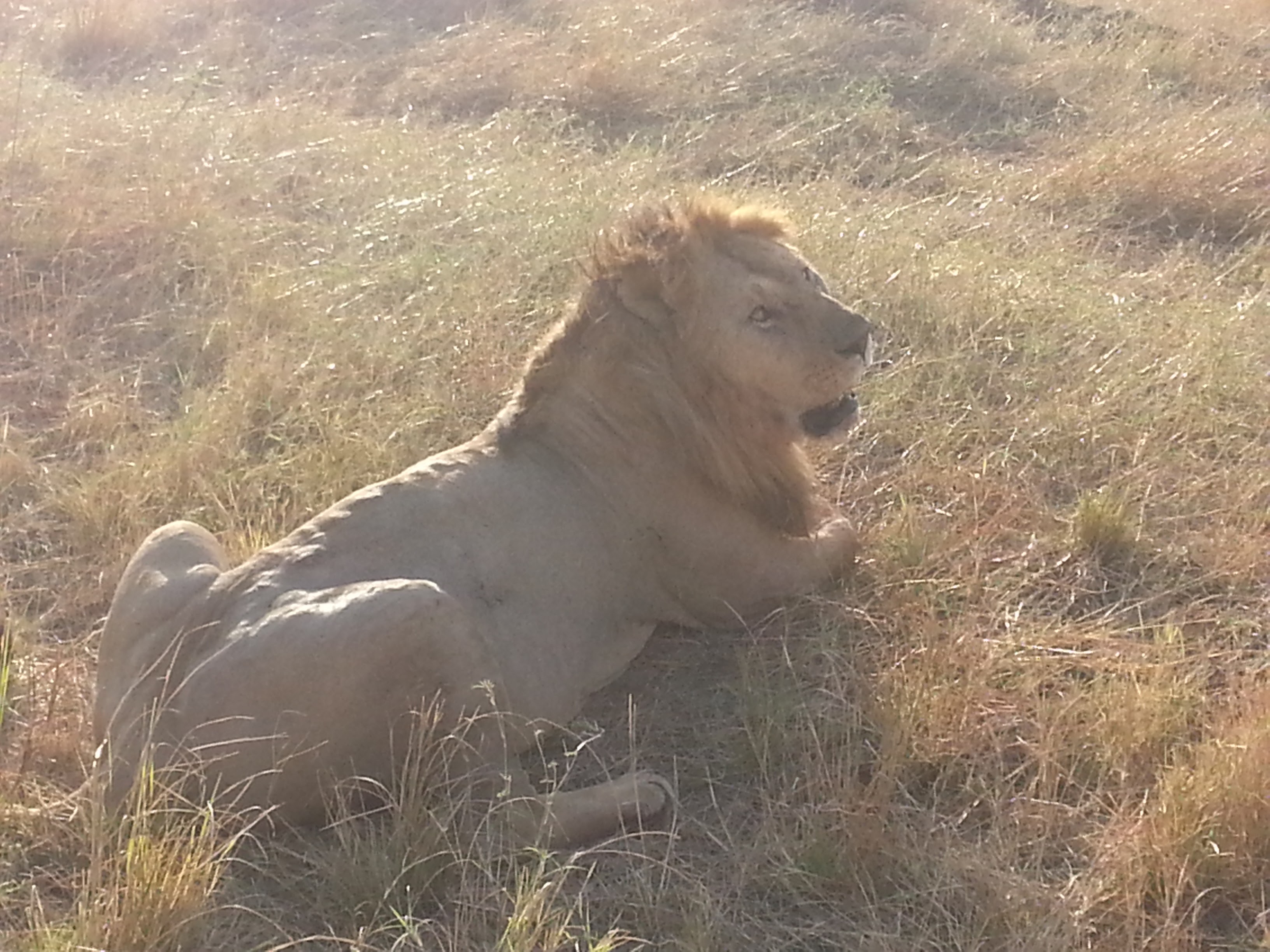

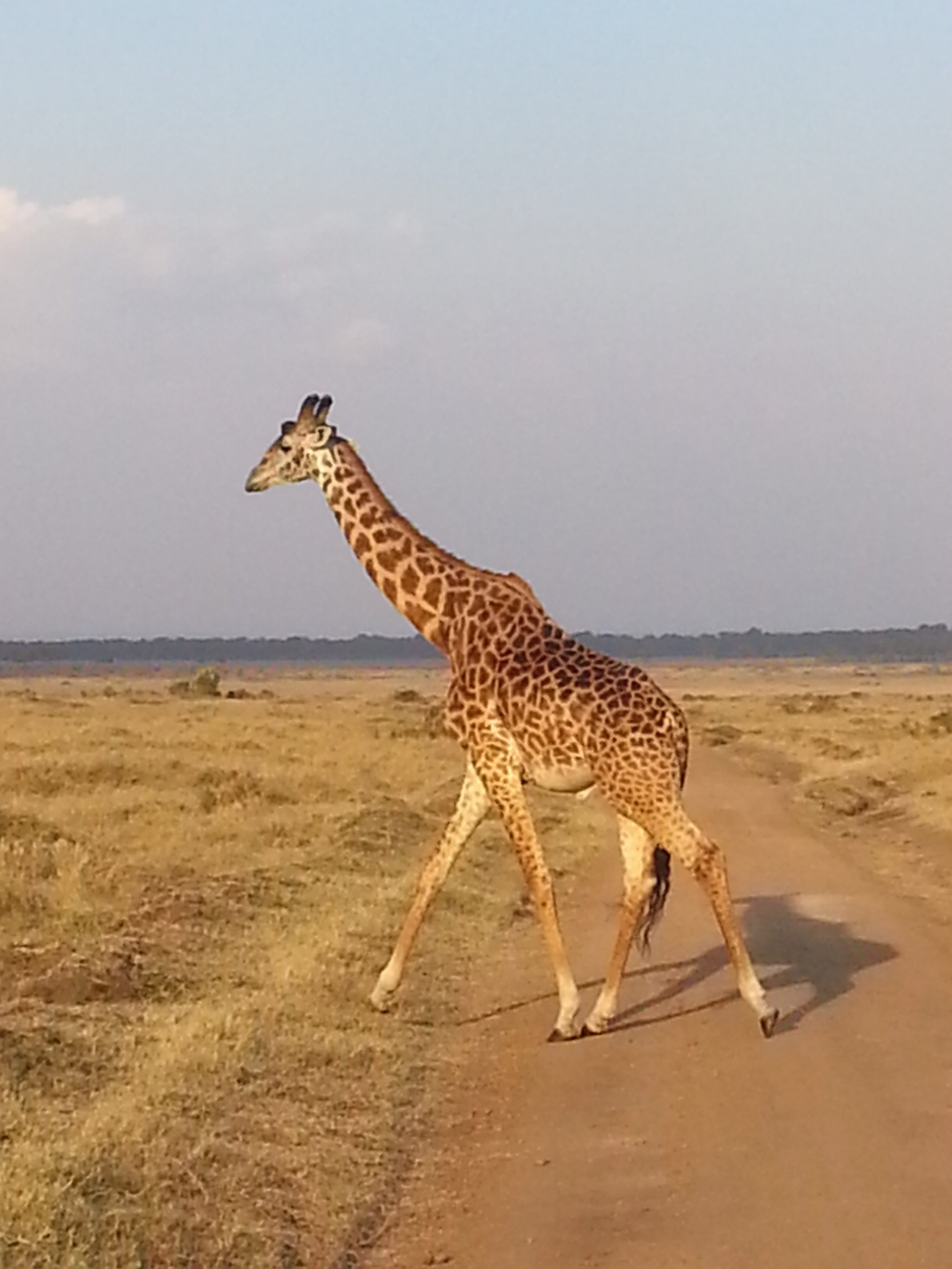



 Masaai Mara – just wow!
Masaai Mara – just wow!